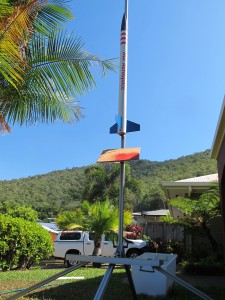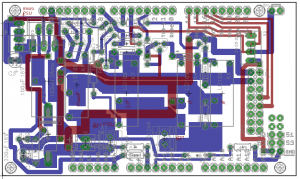IMU stands for “Intertial Measurement Unit”. It measures accerations, angular velpcity and magnetic field. From these measurements and with some clever Mathematics, we can calculate the orientation of a device in a Gravitational field (Earth) and the direction it is pointing in (using the Magnetometer).
Why do we want an IMU?
It is important to know what state the rocket is in:-
- Immediately before launch – i.e. is its movement within prescribed safety limits?
- During launch – i.e. what is the acceleration that it is experiencing, in what direction is it accelerating?
- And after launch – i.e. how long is it in freefall? Has the parachute deployed?
This IMU will give us a very good idea of how it is behaving. The groundstation will receive all raw IMU data as well as pitch, roll and yaw and will save this to the local database. We have created several alerts that feed on this data to advise us of particular states. e.g. excessive rotation, acceleration milestones, freefall detection.
We will also have a 3-D representation of the rocket, so we can quickly picture its orientation and motion. Below is a Youtube clip of us testing out an initial release of the code. It works, but there is much to be done.
The IMU is not mounted in the normal sense, with Z up, X and Y in the horizontal plane. We have it mounted with positive X axis up instead. We expect the rocket to be predominantly in X axis. So we are low risk of Gimbal Lock. As it goes up we expect certain amount of swaying from this position. As it is accelerated, (for that few seconds), the acceleration will far exceed the gravitational acceleration, so the routines for measuring orientation will not be of much use. While the rocket is coasting, the IMU will detect ‘freefall’ state. We won’t be able to sense its orientation too well at this point. Once the drogue parachute is deployed we should get some good data on orientation…because the rocket/parachute will more or less be falling at a constant velocity.



